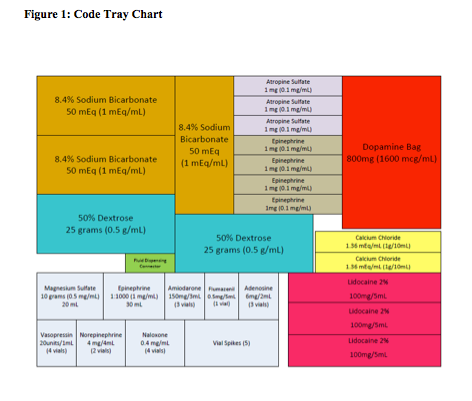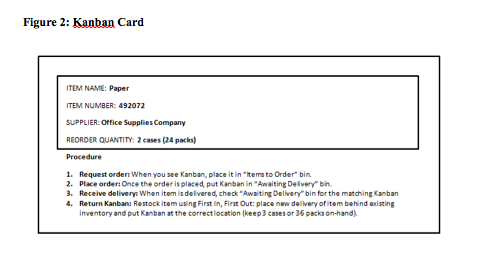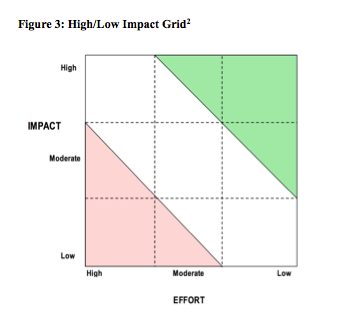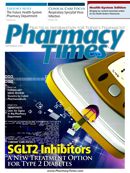Publication
Article
Pharmacy Practice in Focus: Health Systems
Lean Six Sigma in the Pharmacy Department
Author(s):
The pharmacy department at the University of North Carolina (UNC) Hospitals has benefited significantly from applying Lean Six Sigma (LSS) techniques to its inpatient pharmacy. LSS is an approach to quality improvement informed by both Lean and Six Sigma practices. Lean and Six Sigma were developed separately in the automotive and telecommunications industries, respectively, to increase efficiency and quality.
The foundation of Lean processing began with the Toyoda family in Japan in the early 1900s. The philosophy of Lean is reduction of waste in order to improve production and reduce cost. Six Sigma, developed by Motorola in 1986 and made popular in the mid-1990s by General Electric, was designed to reduce cost by decreasing defects. The combination of both techniques for the purpose of quality improvement is termed Lean Six Sigma. While both techniques began in manufacturing years ago, their adoption into health care has increased rapidly as institutions have found themselves pressed to increase quality while simultaneously decreasing costs.
Online Table 1 provides an overview of LSS terminology.1-4
Table 1: Lean Six Sigma Terminology
Lean Six Sigma Terminology
Lean
A practice to maximize value, as defined by the customer, and minimize waste.
Value added
Anything for which a customer would pay.
Non-value added
Any activity that does not contribute to adding customer-defined value.
Gemba walk
Gemba is a Japanese term for where the work occurs. A gemba walk is going to where the work occurs in order to learn granular information about the work process. For example, where do the delays occur? What is the current process? Where do defects occur?
Kanban
A card containing prescriptive descriptions on how to complete a process or part of a process (Figure 2).
Value stream mapping (VSM)
Analyzing the current work flow and identifying waste, focusing on areas of bottlenecks and decreased efficiency.
Lean Six Sigma (LSS) events
Various names are applied to describe different types of events. LSS events range from short 1-half or 1-day events (Express Workout), to 3- to 5-day LSS events, called kaizens. Kaizen is the Japanese word meaning “improvement.” Regardless of the term used, all are projects that will result in improvement. During these LSS events, volunteers unite to create improvements for a given area.
5S Principles
Sort, set in order, shine, standardize, and systemize.
Sort
Identifying and removing the aspects of the work area that either create waste (eg, excess clutter or outdated processes) or are non-value added.
Set in order
Ensuring everything has a place and minimizing excess movement, wasted time, and overproduction.
Shine
Calibration of machines/area to ensure optimal performance (eg, tidy work space) and minimize variance.
Standardize
Bringing into conformity all systems in the area and ensuring that all personnel understand that the standardization will ensure compliance.
Systemize
Maintaining the cleaning and organization completed in the first 4 steps.
Six Sigma
Technique to improve processes by decreasing variance.
The UNC inpatient pharmacy has conducted 3 Kaizen (“improvement”) events to improve work flow and customer service to patients and nurses. Overall, these improvements have refined work flow and improved employee and customer satisfaction. Here are the results of various LSS techniques and projects utilized in the inpatient pharmacy:
Code Trays

Prior to the code tray LSS project, code trays were assembled by a technician who obtained 15 different drugs from the drug carousels. A pharmacy technician had to remember the correct number of drugs that were needed in each code tray pocket and the code tray layout, and then pull drugs from the carousel to fill the code trays. Only senior staff members were efficient with this process. There were numerous errors requiring pharmacist interventions and technician time to make corrections. As a result of the LSS project, a chart containing the layout of the code tray was placed in the code tray production area (Online Figure 1). Code drugs were placed in small bins within arm’s reach to fill the unfilled tray, eliminating 40 walking steps between the code tray area and carousel machines. The code tray chart prescriptively explains the process, allowing an untrained individual to construct or refill a code tray with no further instruction than the chart.
Returned Medications
Prior to the LSS projects, returned medications from the patient units sat in the pharmacy, waiting to be placed back in the drug carousels. The unnecessary clutter and disorganization resulted in expired medications and increased inventory on hand. To decrease clutter, a shelf with bins for each respective location in the carousel was constructed. When technicians return from delivering medications to patient floors, they sort the medications and place them in the corresponding bins. Stock is returned to the carousel on a daily basis.
Office Supply Inventory Management
Although seemingly less important than medication inventory, the value of properly managing other supplies to dispense medications should not be diminished. Kanban cards that describe when to order an item, how much to order, and the item’s order number were created (Online Figure 2).

Triage Technicians
During an LSS event, the team reached out to their nursing “customers” to determine what type of telephone interactions were desired in the event of a missing dose or when an intravenous (IV) compatibility question came up. This led to the creation of a triage technician position to independently assist nurses in locating missing doses, filtering compatibility questions to the IV room pharmacist, or deferring more complicated non-sterile medication questions to the inpatient pharmacists. This position eliminated inefficiencies caused by various employees interrupting their work flow to answer a telephone call.
Using LSS in Your Pharmacy
- Identify the problem you want to solve or process you want to improve
- Gain support from management and individuals willing to join the team
- Create a team
- Become intimately knowledgeable about the current work process Conduct a gemba walk (an observation of the work process) Understand the value stream
- Keep the customers in the forefront
- Choose solutions based on predicted high impact
- Implement changes
- Ensure that there are measures for accountability
- Promote continued quality improvement
LSS projects can be utilized on a small or large scale. The first important task is to identify a process that needs to be improved. Gather the proper support to conduct an LSS event. If the pharmacy group is small, invite colleagues from other disciplines to help. Allowing staff to be creative in forming teams can yield great results. At UNC, interdisciplinary members’ perspectives contributed fresh and valuable ideas. It is important to have support from management whether in the form of their participation or support to help eliminate obstacles that might be hindering the identified process.
Create a team based on the anticipated workload of the project. If the project is larger than your volunteer pool, limit the scope of the project to a smaller piece of the overall problem. During an LSS event, a volunteer may gladly contribute 4 or more hours to labeling shelves, an act that would normally take days to complete during regular work hours. This concentrated burst of work can result in overall shorter completion times on projects than if the project is done by pharmacy staff in between regular daily responsibilities.
After the team is formed, every team member should understand the current work process. The gemba walk is a way to ensure that all members observe the work flow. Once the team feels comfortable with the process, brainstorm potential improvements that could improve value for the customer. To determine what the value for the customer is, the customers must be identified. Although patients are an obvious end point, nurses and others who rely on pharmacy must be kept in the forefront of improvement efforts. Delivering value to the customer should be the focus. Speaking with customers or creating surveys, prior to the LSS event, are helpful ways to gather data regarding customer value.
Next, brainstorm potential solutions. The team can create criteria for determining what constitutes high and low effort and impact. Remain consistent throughout the ranking process. The goal is to identify processes that can be improved with little effort, but that will yield high impact. Proceed with solutions that are deemed to be high impact and low effort (Online Figure 3). Although this is a good way to identify starting points, the team may be flexible in pursuing high-effort projects that must be completed or low-impact but easily completed projects.

Once changes are implemented, the LSS team should confirm that there are sustainable accountability measures in place to ensure the changes are practiced. For example, the process of returned medications being placed into labeled bins and returned to the carousel daily became part of standard work for technicians.
Conclusion
LSS principles allow pharmacies to drastically improve processes to improve quality for customers. A department does not need a great deal of resources or expertise to implement LSS principles and reap the rewards. Creative use of willing volunteers can produce results quickly. UNC’s experience with LSS has increased employee satisfaction, breeding excitement for future improvements. With LSS as a tool, UNC is constantly striving to promote the culture of continuous quality improvement.
Jami Mann, PharmD, MBA, is a PGY1 health system pharmacy administration resident at UNC Healthcare. Allison Dipper, PharmD candidate, is a pharmacy technician at the Central Inpatient Pharmacy at UNC Healthcare. Erinn Rowe, PharmD, MS, is clinical manager at UNC Healthcare. Chad Hatfield, PharmD, MHA, BCPS, is assistant director of operations at UNC Healthcare.
References:
1. Center for Innovation in Quality Patient Care. What is Lean Six Sigma? Baltimore, MD: John Hopkins Medicine website. www.hopkinsmedicine.org/innovation_quality_patient_care/areas_expertise/lean_sigma/about/.
2. Lean Six Sigma. University of North Carolina Sharepoint. Chapel Hill, NC: University of North Carolina Healthcare. http://share.unch.unc.edu/Fiscal_Services/Operational_Efficiency/LSS/SitePages/Home.aspx.
3. Al-Araidah O, Momani A, Khasawneh M, Momani M. Lead-time reduction utilizing lean tools applied to healthcare: the inpatient pharmacy at a local hospital. J Healthc Qual. 2010;32(1):59-66.
4. Hintzen BL, Knoer SJ, Van Dyke CJ, Milavitz BS. Effect of lean process improvement techniques on a university hospital inpatient pharmacy. Am J Health Syst Pharm. 2009;66(22):2042-2047.







